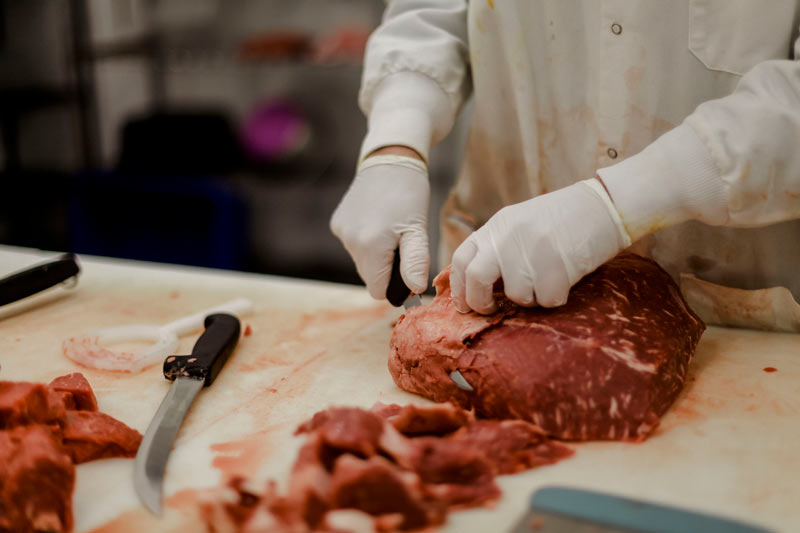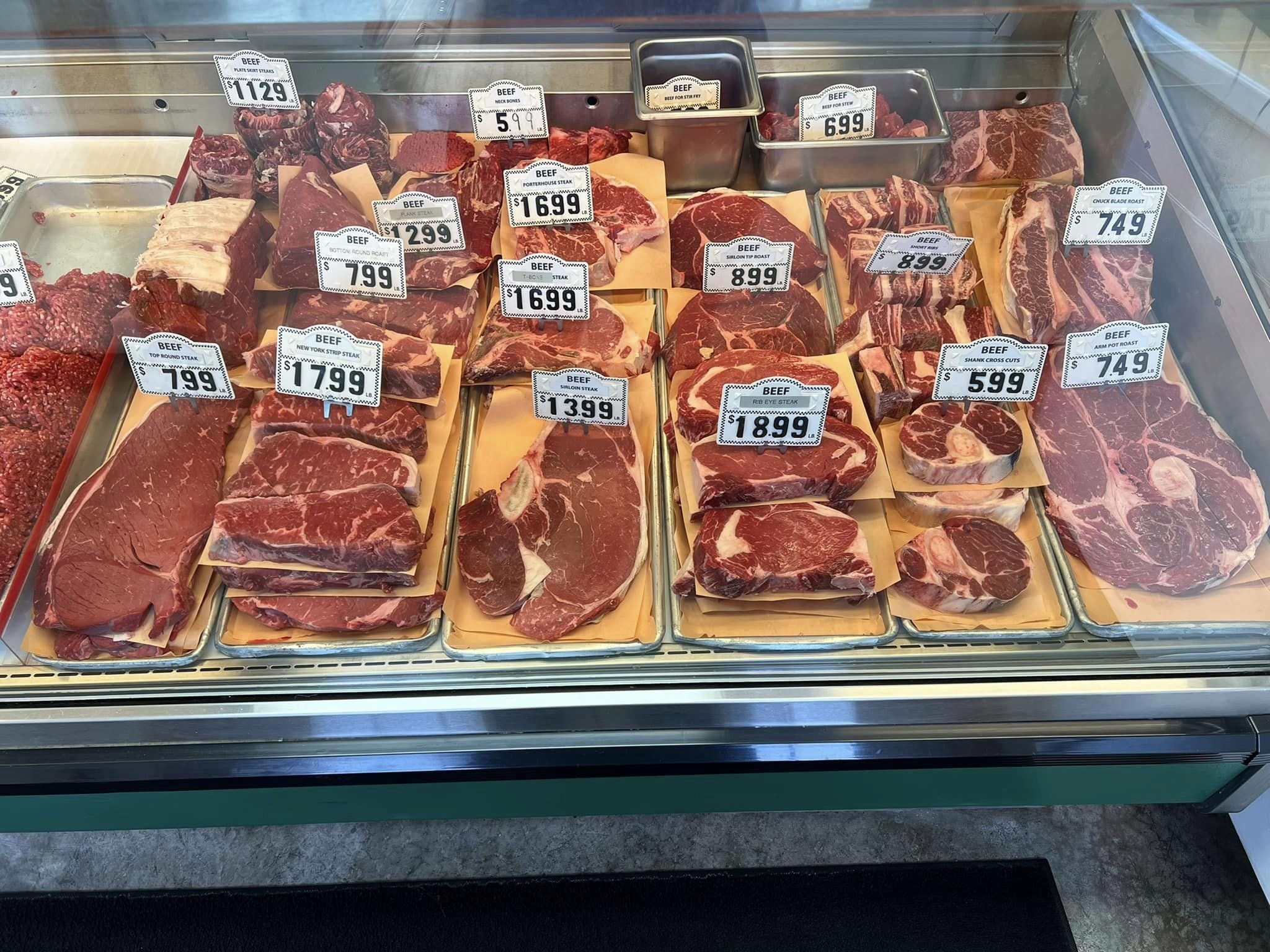Why Bagley Farms Meat Market Edwardsville IL Is the most effective Selection for Top Quality Meats
Why Bagley Farms Meat Market Edwardsville IL Is the most effective Selection for Top Quality Meats
Blog Article
Uncover the Art of the Butcher's Cut in a Modern Meat Market
In the ever-evolving landscape of modern-day meat markets, the butcher's cut has transcended its standard roots, combining age-old craftsmanship with modern practices. Today's butchers are not simply processors of meat; they are experienced craftsmens who highlight sustainability and ethical sourcing. Their knowledge in selecting and preparing cuts customized to specific culinary demands provides an exceptional eating experience. What genuinely sets the contemporary butcher apart is their ability to build a much deeper connection between customers and the beginnings of their meat. Just how do these masters balance tradition with development, and what implications does this have for the future of meat usage?
Evolution of Butchery Methods
The advancement of butchery techniques mirrors a rich tapestry of advancement and adaptation driven by improvements in innovation, modifications in customer need, and a deeper understanding of meat scientific research. Historically, butchery was a craft passed down with generations, with approaches sharpened over centuries to maximize yield and flavor. Nonetheless, the commercial change introduced automation, changing typical methods and enabling large-scale processing.
The mid-20th century saw butchery techniques further refined by clinical insights right into muscle biology and meat aging, boosting both inflammation and preference. Advancements like vacuum packaging and refrigeration extended item shelf-life, enabling butchers to expand offerings and enhance quality assurance. This duration additionally marked the surge of customized devices, such as band saws and meat slicers, which raised accuracy and effectiveness in meat processing.

Electronic systems now aid in monitoring animal provenance and maximizing cuts to satisfy certain client preferences. Furthermore, a renewal in artisanal butchery has arised, blending traditional abilities with contemporary knowledge to cater to customers seeking ethical and sustainable meat alternatives.
Recognizing Meat Cuts
Recognizing the details of meat cuts is essential for both butchers and consumers looking for top quality and value. For butchers, specific cuts mirror ability and respect for the craft, making certain marginal waste and optimum yield.

Comprehending muscle structure is crucial; muscular tissues utilized extra frequently by the animal have a tendency to be tougher and are best matched for slow-moving food preparation methods, while less-used muscles, like those discovered in the loin, are much more tender and suitable for barbecuing or roasting. Knowledge with these differences empowers customers to make informed options, enhancing their cooking ventures.
Picking High Quality Meat
Selecting the appropriate meat includes more than simply selecting a visually enticing item from the screen. bagley farms meat market edwardsville il. The art of choosing top quality meat calls for a critical eye and knowledge of certain attributes that symbolize quality and quality. Pay attention to the shade; beef ought to have an intense, cherry-red hue, while lamb should display a soft pink tone, and pork a light pink. This indicates the meat is fresh and hasn't been revealed to oxygen for as well lengthy.
Second of all, think about the marbling, which describes the white flecks of fat within the muscle mass. Correct marbling is a key indication of tenderness and flavor, as it thaws during cooking, boosting the meat's juiciness. Remember, greater marbling typically associates with exceptional high quality cuts, such as USDA Prime.
Texture is one more important home factor; meat must feel strong to the touch, not slimy or excessively soft. Furthermore, be conscious of the fragrance. Fresh meat should have a tidy, neutral scent, without any type of sour or repulsive odors.
Matching Cuts With Cooking Approaches

On the other hand, tougher cuts like brisket and chuck roast are abundant in collagen, which breaks down right into gelatin when prepared gradually. These cuts are ideal for braising or slow roasting, permitting the meat to tenderize gradually and create deep, complex tastes. Cuts such as brief ribs and pork shoulder make out well with slow-cooking methods, where extended cooking times change their robust textures right into succulent meals.
Lamb shanks and oxtail, which require extended food preparation to soften, are best candidates for stewing or slow-moving simmering. These methods coax out rich, hearty flavors while preserving wetness. By recognizing the special characteristics of each cut, cooks and home cooks alike can boost their culinary creations, guaranteeing each recipe is both pleasing and unforgettable.
The Butcher's Role Today
Browsing the advancing landscape of the contemporary meat market, the butcher's duty today expands beyond plain prep work of cuts. Contemporary butchers are culinary artisans, teachers, and advocates for sustainable techniques. They connect the void in between the ranch and the fork by guaranteeing ethical sourcing, comprehending pet husbandry, and focusing on transparency in the supply chain. This shift reflects the growing consumer demand for quality over quantity, where provenance and pet welfare are critical.
Along with crafting accurate cuts, butchers currently engage directly with consumers, providing cooking advice i was reading this and customizing choices to match specific requirements and choices. Their experience in meat aging, marbling, and flavor profiles empowers consumers to make informed choices, enhancing their culinary experiences. This personalized service exhibits the butcher's advancing duty as a trusted consultant in the kitchen.
In addition, butchers are pivotal in lessening waste, utilizing entire animals to produce varied products such as sausages and supplies. This comprehensive strategy not only values the animal yet likewise straightens with modern sustainability objectives. In this way, the modern butcher personifies both practice and advancement, adapting to an ever-changing market while maintaining the artistry and honesty of their craft.
Final Thought
The modern butcher's craft intricately weaves typical strategies with modern technologies, stressing lasting practices and moral sourcing. Proficiency in recognizing diverse meat cuts and quality indicators encourages butchers to supply educated referrals, lining up certain cuts with ideal food preparation approaches. This experience not only boosts cooking experiences however additionally strengthens the connection between customers and the origins of their food. By honoring historic practices while welcoming contemporary demands, the butcher's function get redirected here remains important in today's innovative meat market (bagley farms meat market edwardsville il).
Report this page